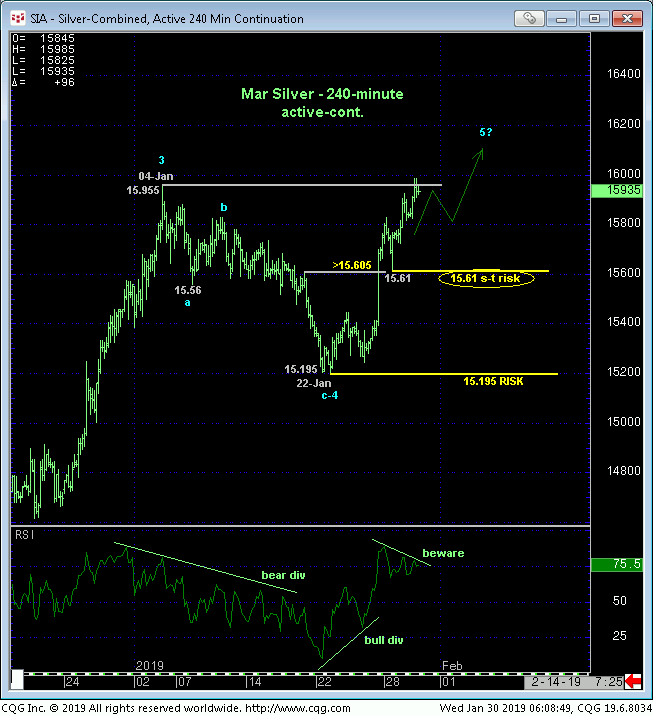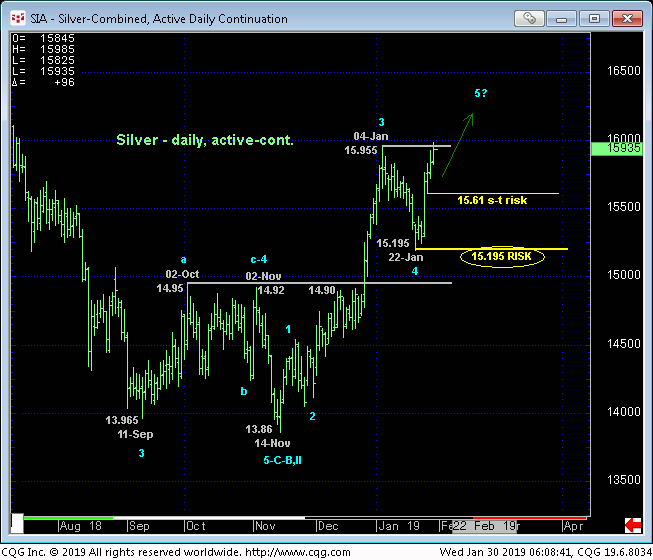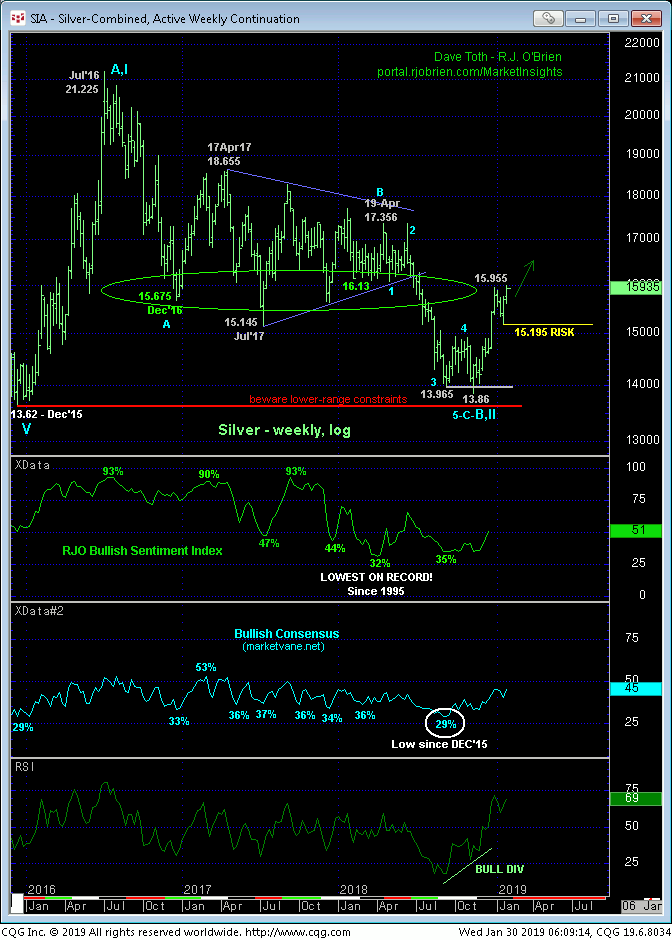

Overnight’s break above 04-Jan’s 15.955 high reaffirms the major reversal attempt from 14-Nov’s 13.86 low and leaves smaller- and larger-degree lows in its wake at 15.61 and 15.195, respectively, that the market is now required to fail below to threaten or negate a broader bullish count. These levels represent our new short- and longer-term risk parameters from which a still-advised bullish policy and exposure can be objectively rebased and managed.

While the past couple months’ recovery is one of this market’s more impressive bullish stints the past 2-1/2-years, these bull risk parameters may come in handy as the market engages a 15.50-to-16.50-area that provided a ton of support from Dec’16 until Jul’18’s breakdown that left this area as a huge resistance candidate. If there’s a time and place for this rally to run out of steam a relapse, it is here and now. And we will gauge such a failure, or not, by the market’s ability to sustain recent gains above 15.61 initially and then 15.195.
In lieu of such weakness, our preferred count is a shocking one that still contends the entire Jul’16 – Nov’18 relapse attempt is “only” a (B- or 2nd-Wave) correction of Dec’15 – Jul’16’s initial (A- or 1st-Wave) rally within a major, multi-tear base/correction/reversal environment that warns of a (C- or 3rd-Wave) run at Jul’16’s 21.225 high or above. Per this count the market would be expected to trade through this $16-handle area in an increasingly obvious, trendy, impulsive manner pretty much straight away.
These issues considered, a bullish policy remains advised with a failure below 15.61 required for shorter-term traders to move to the sidelines and longer-term players to pare bullish exposure to more conservative levels. Ultimately, commensurately larger-degree weakness below 15.195 is required for long-term bulls to jettison the position altogether. In lieu of such weakness further and possibly accelerated gains should not surprise.


